Taking the Dongfeng Chenglong H7 Fuel Tanker Truck as an example, let’s take a look at the special safety features of hazardous goods transport trucks.
To fully understand the different configurations, we need to refer to the original text of the JT/T 1285-2020 regulation and compare it with the vehicle’s actual setup.
● Speed Limitation — Stability in Emergencies
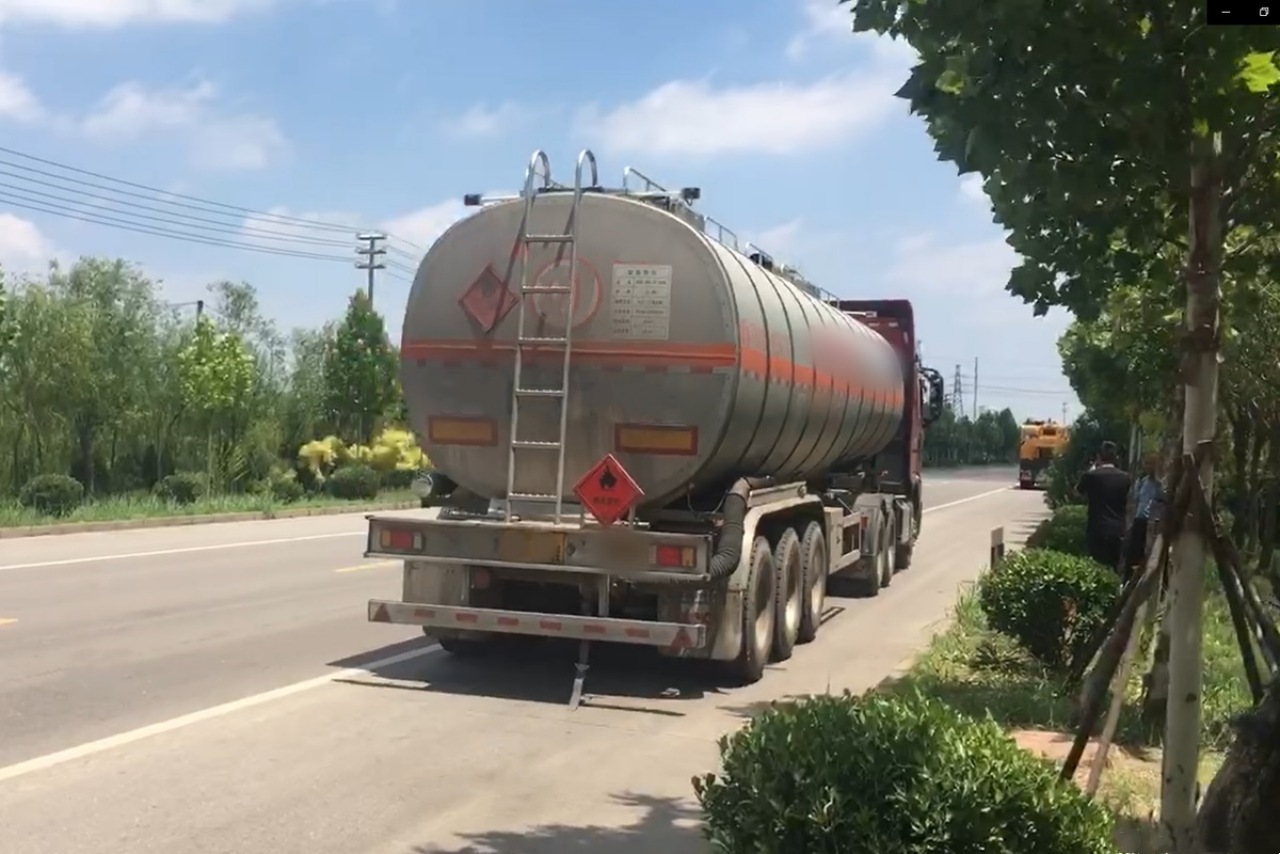
First, according to section 6.1.1:
“Hazardous goods transport trucks must be equipped with a speed limiting function. The maximum set speed for this function must not exceed 80 km/h.”
Compared to ordinary trucks that are speed-limited to 89 km/h, hazardous goods transport trucks run slower for enhanced safety.
Second, per section 6.1.2:
“Hazardous goods semi-trailer tractors and hazardous goods trucks with a gross mass ≥ 12,000 kg must be equipped with an Electronic Stability Control (ESC) system.”
ESC builds upon ABS (Anti-lock Braking System) and TCS (Traction Control System), and adds sensors for wheel speed, steering angle, lateral acceleration, and yaw rate.
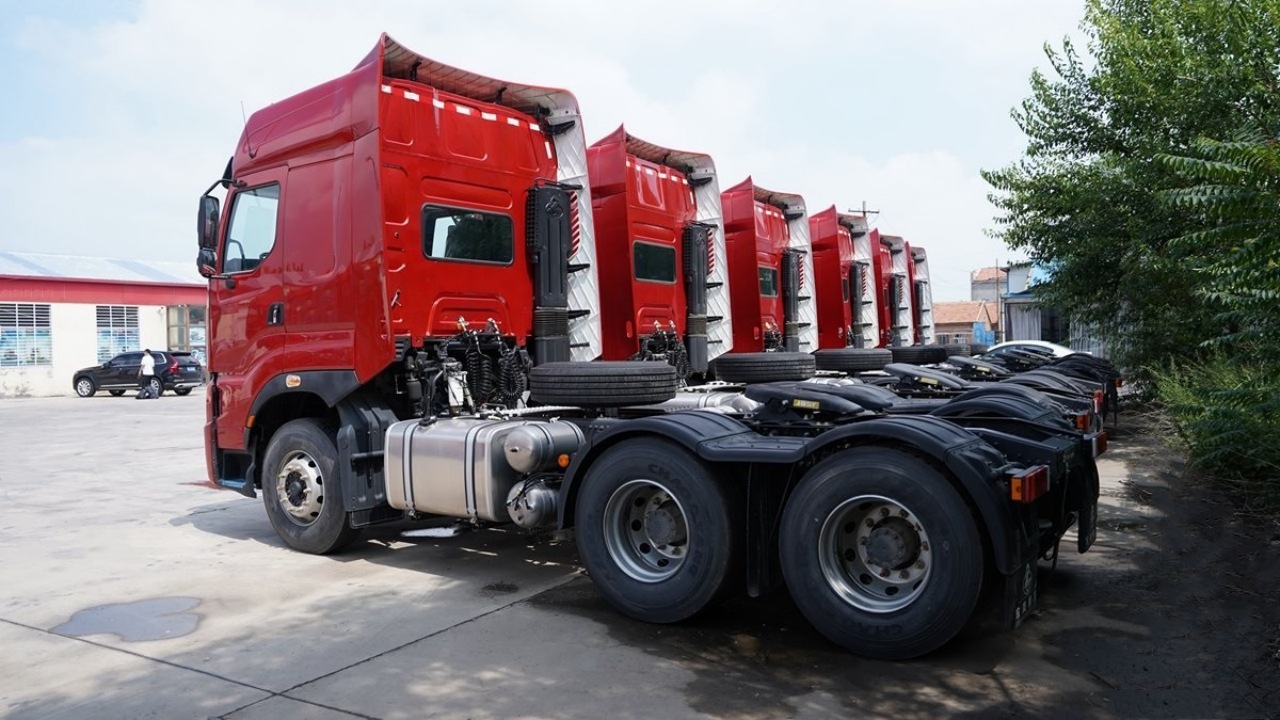
When the vehicle is about to understeer or skid, ESC intervenes by adjusting throttle input and applying braking to individual wheels as necessary to restore the vehicle to its normal path.
● Air Suspension — Standard for Smooth Rides
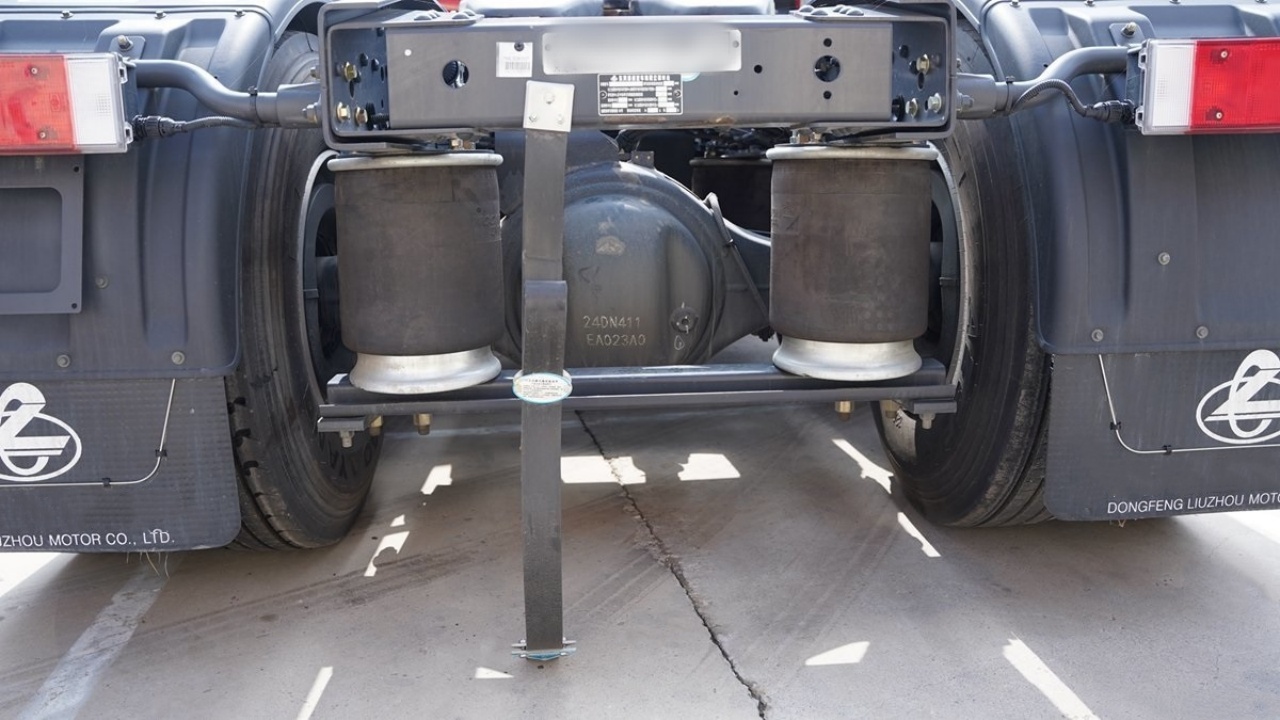
Third, section 6.1.3 states:
“Hazardous goods semi-trailer tractors’ rear axles (non-steering), all axles of hazardous goods semi-trailers, and the rear axles of hazardous goods trucks with gross mass ≥ 12,000 kg must be equipped with air suspension.”
This is easy to understand — air suspension effectively absorbs road vibrations, protecting both the vehicle’s stability and the safety of hazardous materials onboard.
● Tires — Smaller But Stronger, with More Tech
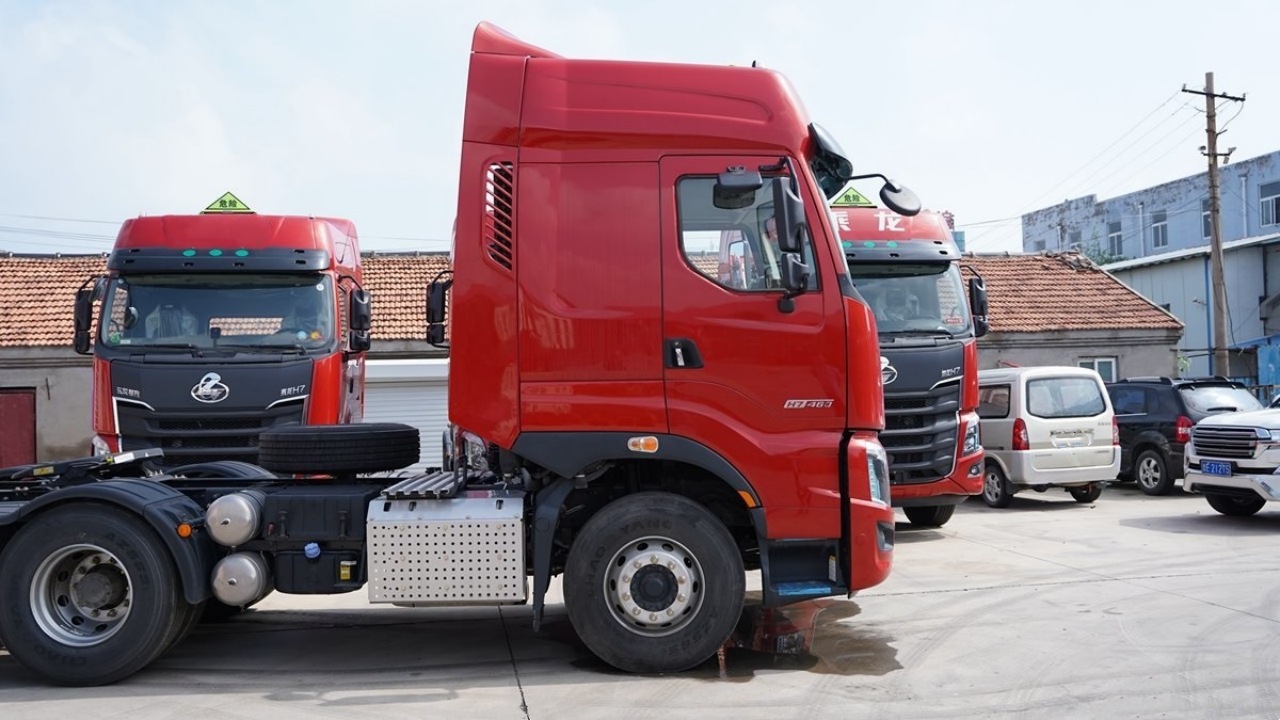
Fourth, per section 6.1.4:
“Hazardous goods semi-trailer tractors and trucks with a gross mass ≥ 12,000 kg that use single tires must be equipped with a Tire Pressure Monitoring System (TPMS) or similar device.”
For tractors, front tires must be equipped with TPMS.
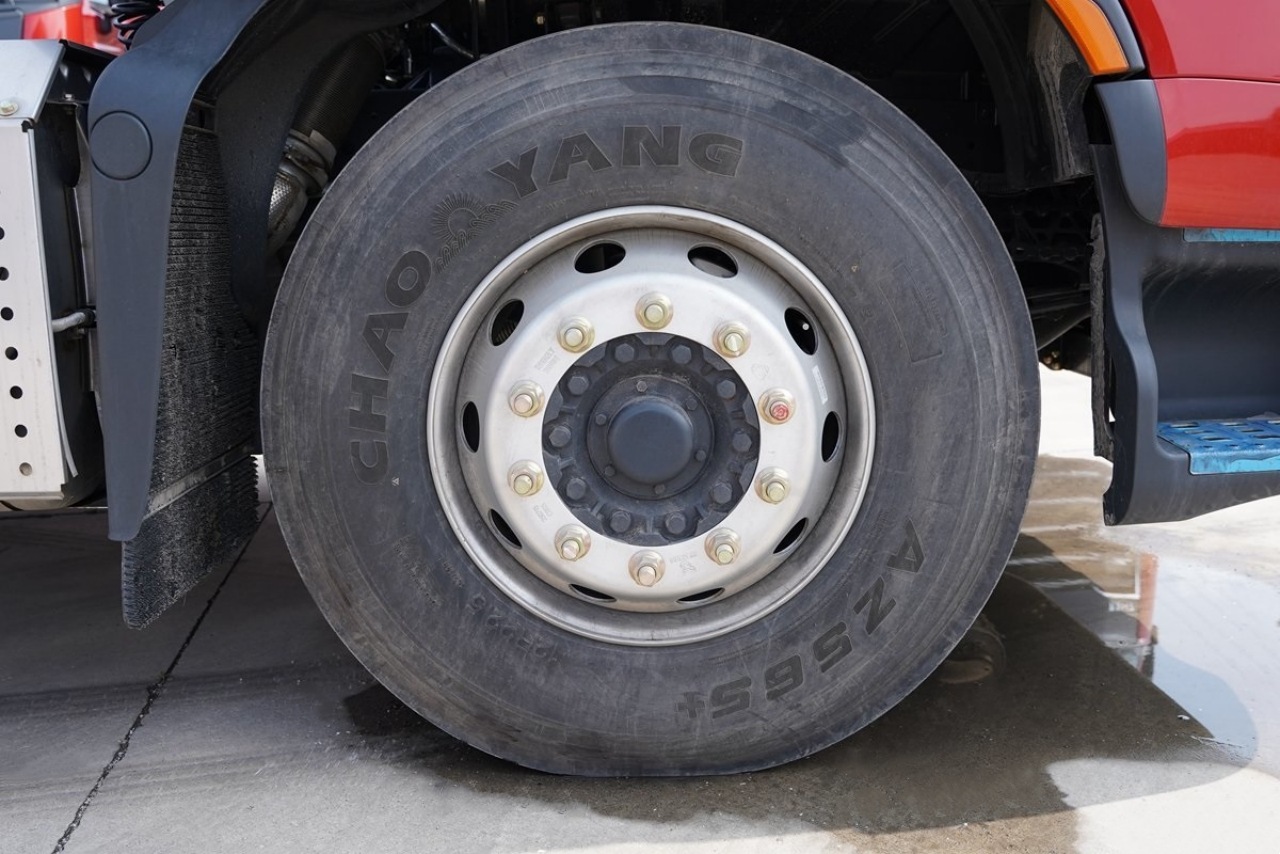
Fifth, according to section 6.1.5:
“Hazardous goods semi-trailer tractors and trucks with a gross mass > 3,500 kg must have emergency tire burst safety devices installed on the steering wheels.”
These are commonly known as run-flat tires or burst-proof devices — if a blowout occurs, the tire won’t immediately lose steering or braking capability and can still function for a short time.
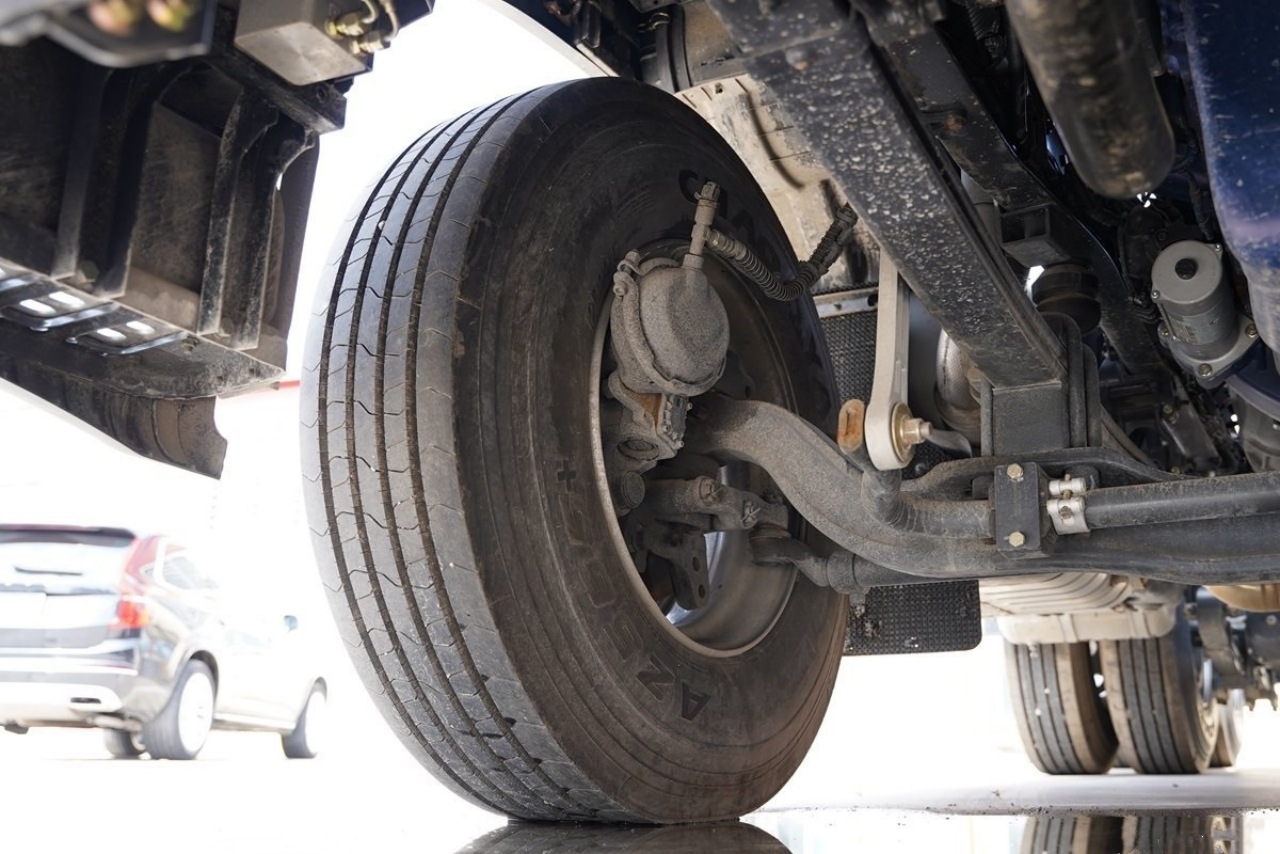
Sixth, section 6.2.1:
“Steering wheels of hazardous goods transport trucks and all wheels of hazardous goods semi-trailers must be equipped with disc brakes.”
Disc brakes offer better ventilation, faster heat dissipation, and smoother braking response, so requiring them for trailers makes practical safety sense.
● GPS — Accurate Real-Time Tracking
Seventh, per section 6.1.6:
“Hazardous goods transport trucks must be equipped with an in-vehicle satellite positioning terminal in accordance with JT/T 794.”
This ensures real-time vehicle tracking and remote monitoring.
● Retarder — Confidence for Mountain Roads
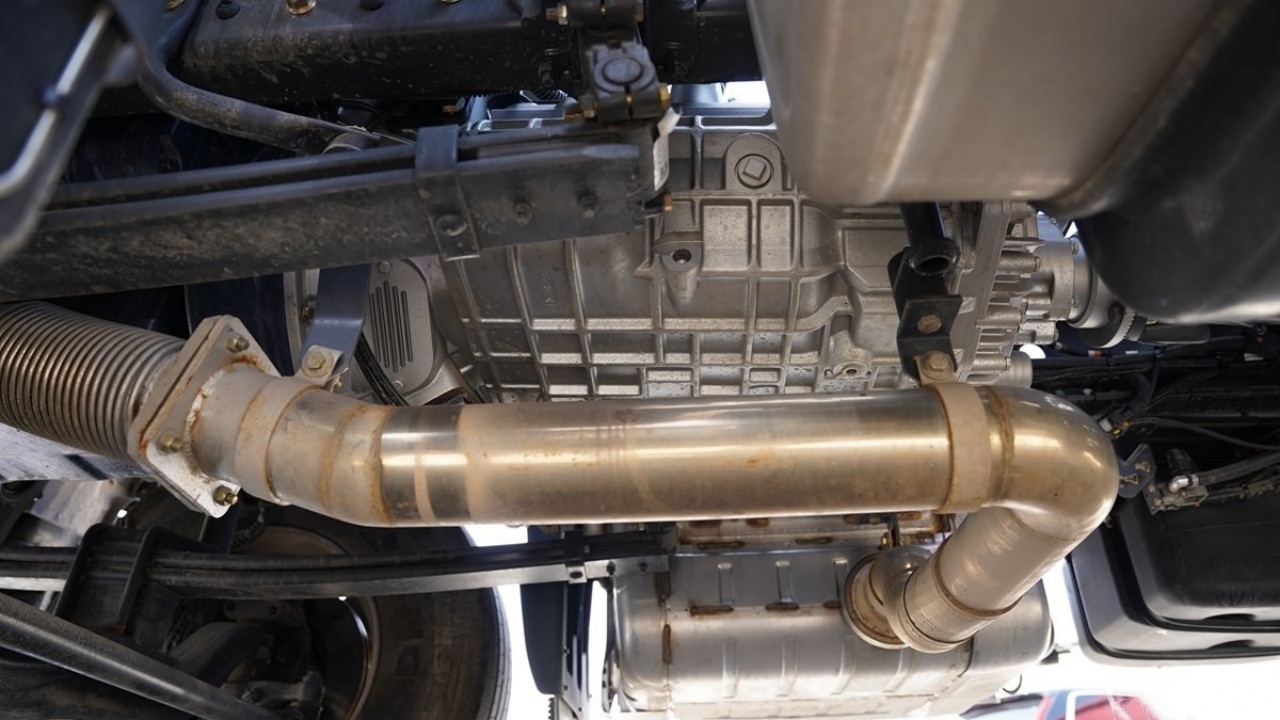
Eighth, per section 6.2.3:
“N2 and N3 class hazardous goods transport trucks must be equipped with a retarder or other auxiliary braking system.”
At a minimum, the tractor should have engine braking. In fact, under EURO VI emissions standards, most hazardous materials trucks now come standard with hydraulic retarders, offering excellent auxiliary braking performance on descents.
● Warning Systems — Full Active Safety Suite
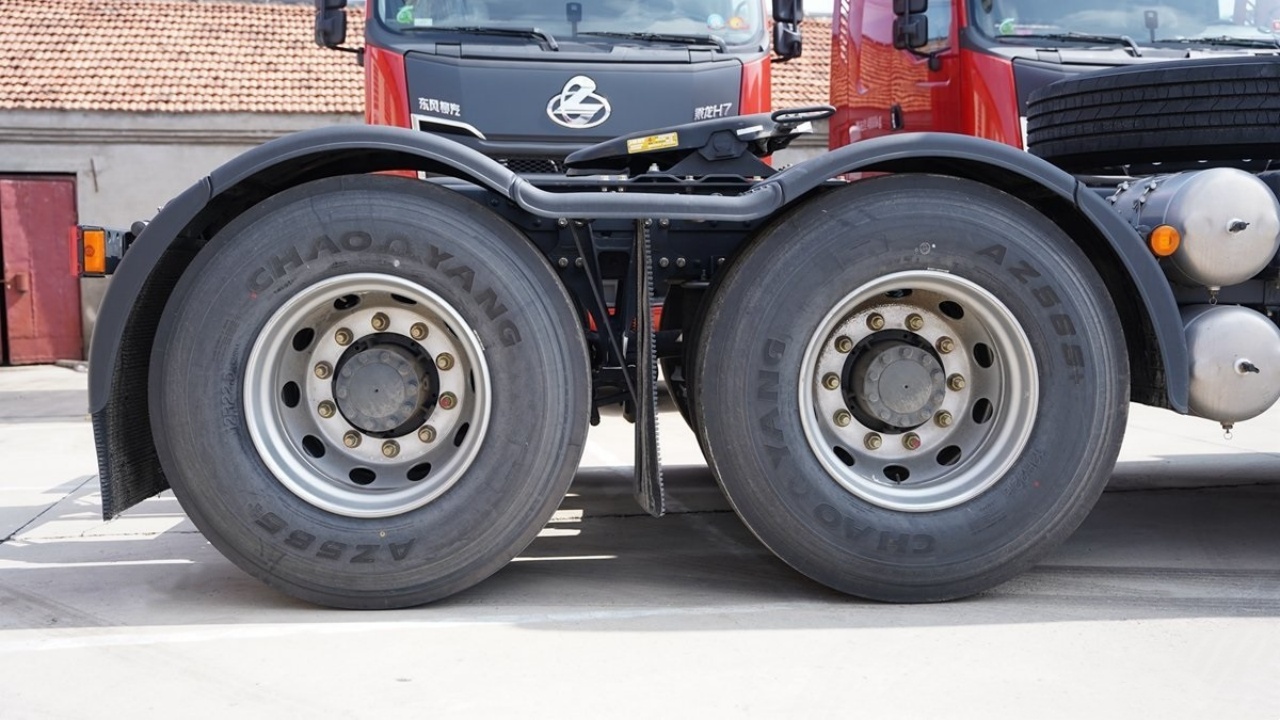
Ninth, according to section 6.2.4:
“Hazardous goods transport trucks with gross mass ≥ 12,000 kg must be equipped with an Automatic Emergency Braking System (AEBS) in accordance with JT/T 1242, except for semi-trailer tractors, liquid hazardous goods tankers, and explosive transport vehicles.”
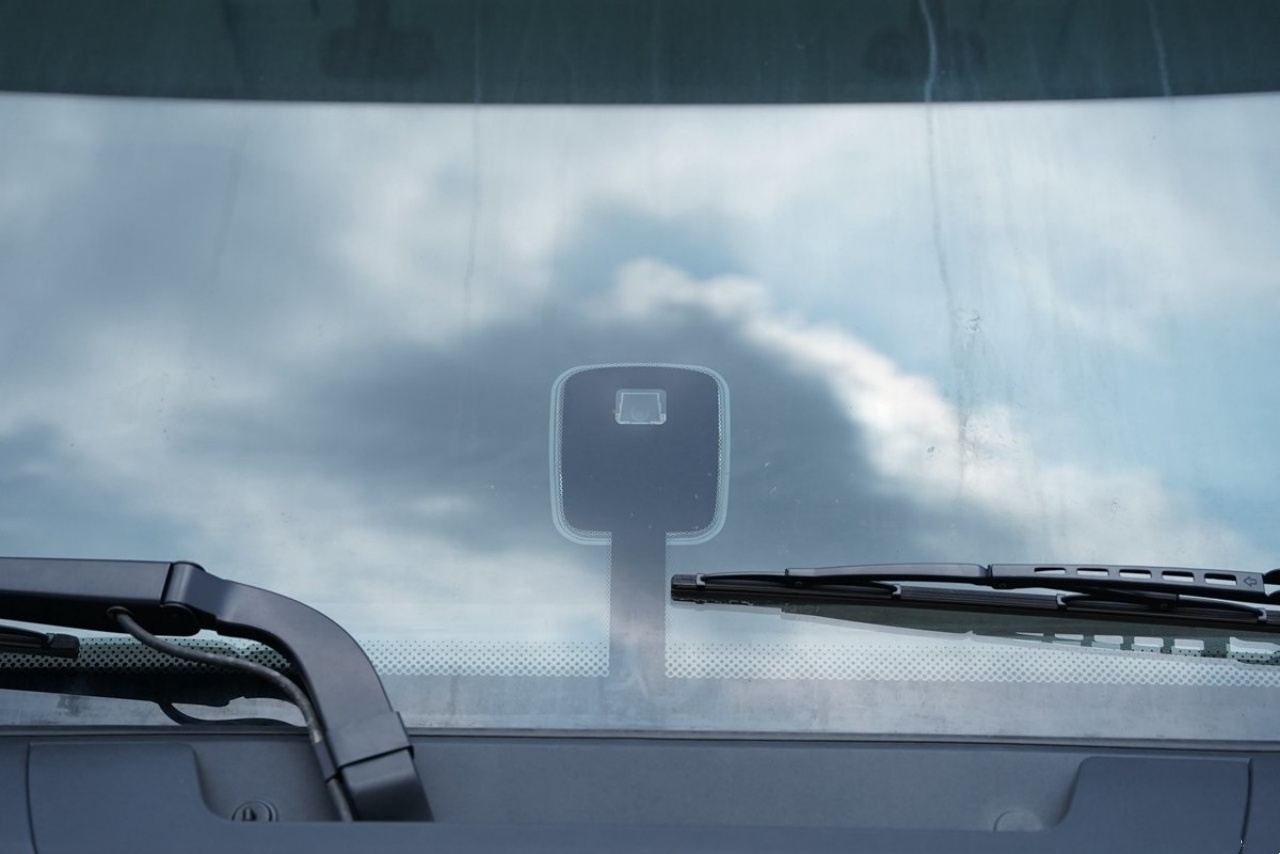
Tenth, section 6.3 states:
“Hazardous goods transport trucks must be equipped with Lane Departure Warning System (LDWS) and Forward Collision Warning (FCW) functions.”
This means that both medium-duty hazardous goods trucks and tractor units should have these 2 active safety warning features installed.
● Modified Exhaust — Relocated for Safety
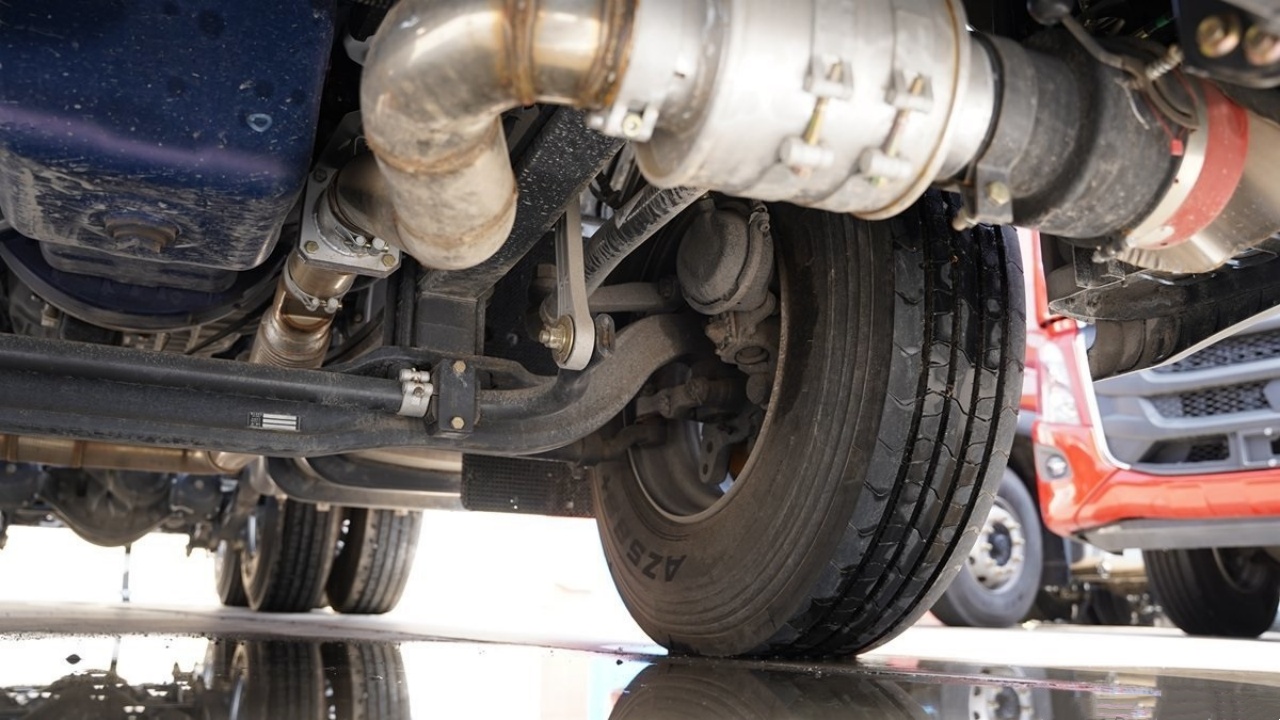
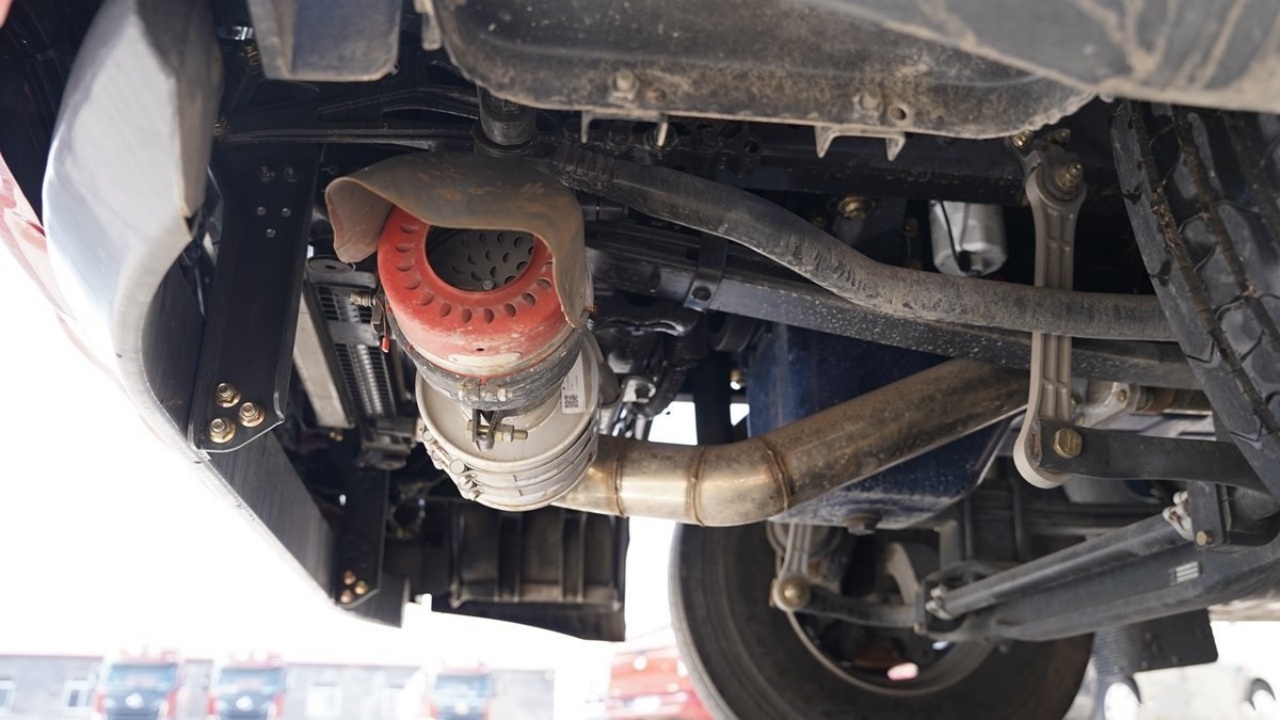
On most vehicles today, the post-treatment and exhaust systems are located near the fuel tanks on either side, roughly mid-chassis. However, due to high exhaust temperatures and the potential for sparks, hazardous goods trucks route their exhaust systems to exit under the engine, often with an added flameproof cap to prevent ignition risks.
● Small Fuel Tank — 400L is Safer
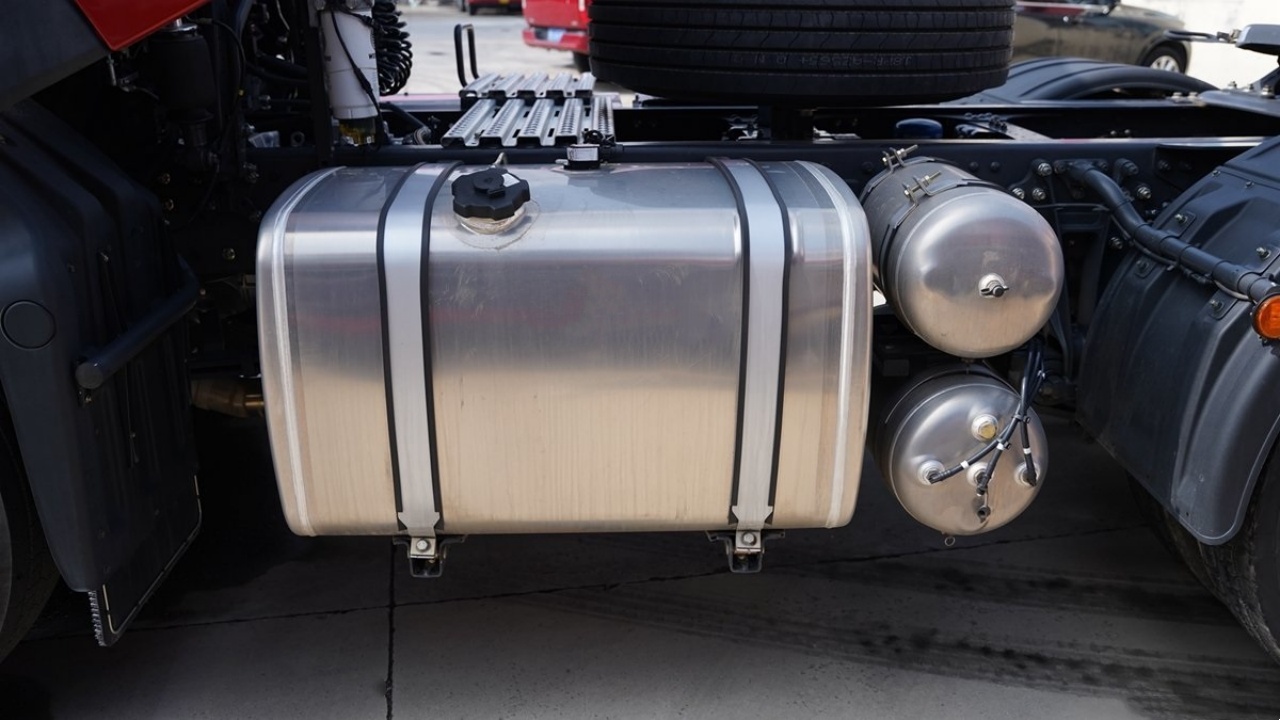
Hazardous goods semi-trailer tractors typically come standard with a 400-liter “small” fuel tank, much smaller than the 800L or 1000L tanks seen on standard logistics vehicles. This is a passive safety measure — if the vehicle is hit from the side, the smaller tank has a lower risk of fire or explosion.
● 6 Cameras — Full-Coverage Monitoring
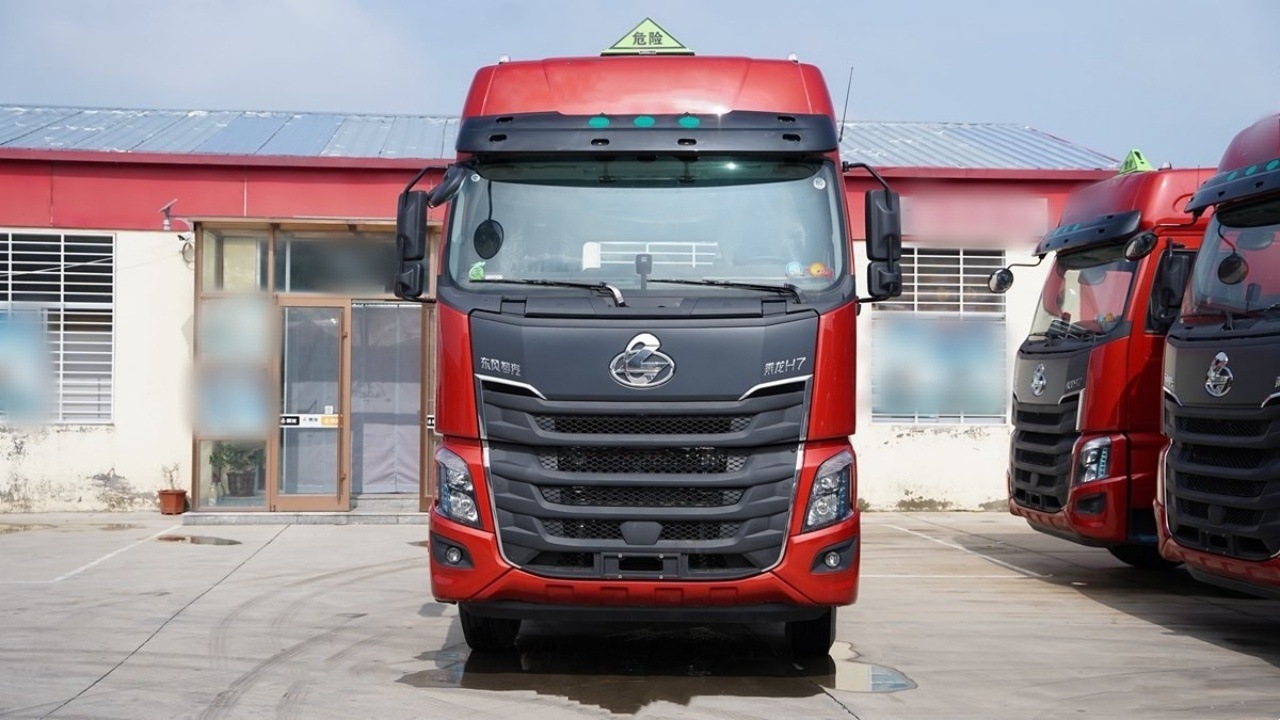
The Dongfeng Chenglong H7 fuel tanker truck is equipped with 5 exterior cameras: 1 in the front, 2 on the sides, 1 at the rear, and 1 on the trailer tank. Together, they provide a 360-degree surround view.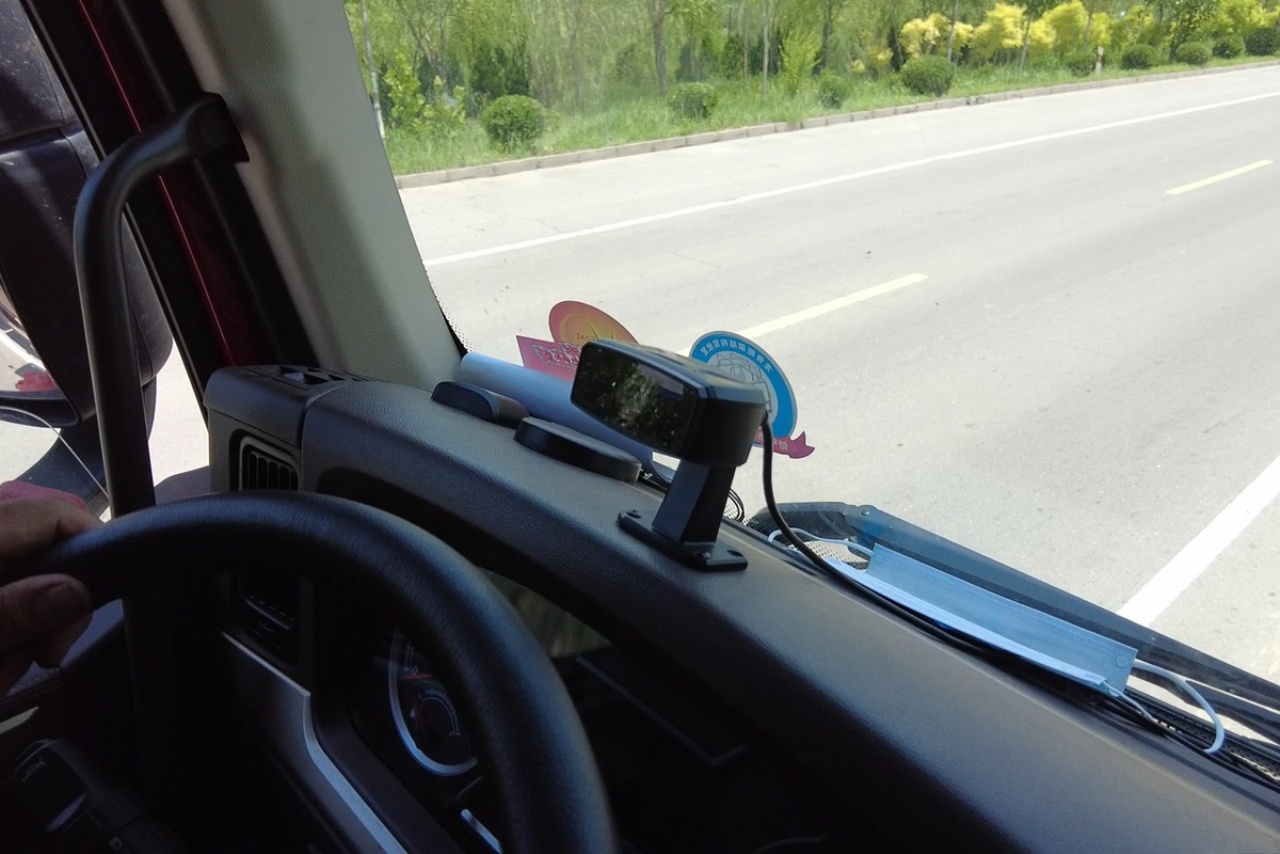
One additional camera is located inside the cab, monitoring the driver for smoking, distraction, or signs of fatigue, and can issue voice alerts if unsafe behavior is detected.
Local regulations also require 24/7 online connectivity for all major camera views, including the driver-facing camera, to prevent safety oversights.

